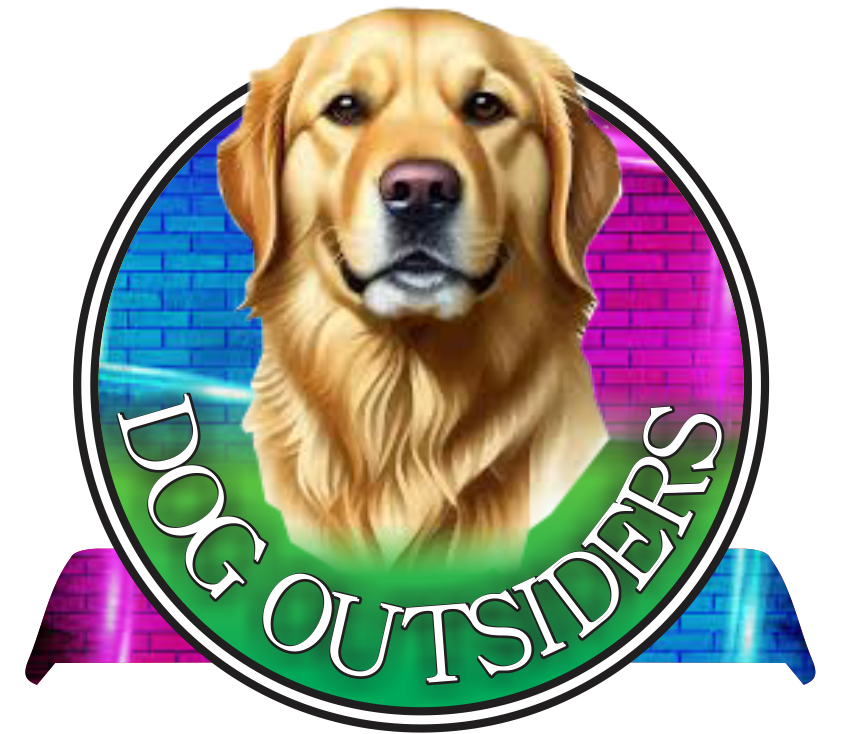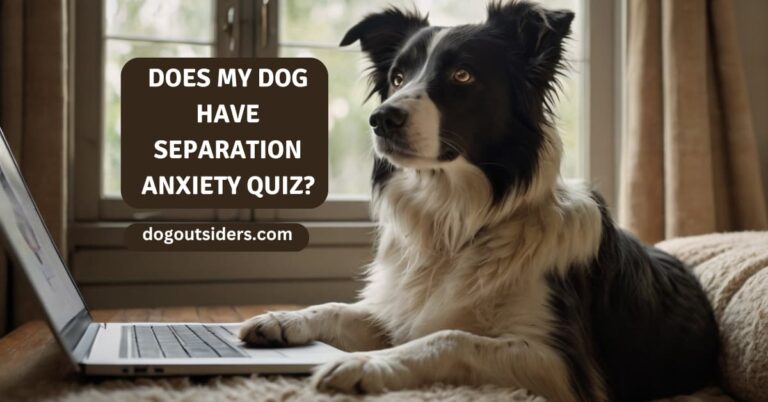When choosing the right prong collar size for your dog, accuracy is key. Ensuring a proper fit not only maximizes effectiveness but also guarantees your pet’s comfort and safety during training sessions. Understanding the measurements needed and how to correctly size a prong collar is essential for a successful training experience. Factors such as your dog’s neck circumference and fur thickness play crucial roles in determining the appropriate size. By following expert guidelines and taking precise measurements, you can select the ideal prong collar size that suits your dog perfectly. Are you worried about “what size prong collar for my dog” should have? Don’t worry; you’re in the right place, and this article is for you; read this complete article carefully and get complete details about the exact size of your dog’s prong collar.
Key Takeaways
- Measure Your Dog: Accurately measure your dog’s neck to determine the correct prong collar size for a comfortable and safe fit.
- Understanding Prong Sizes: Familiarize yourself with the different prong collar sizes available and how they correspond to your dog’s neck measurements.
- Choosing the Right Size: Select the prong collar size based on your dog’s neck size and the manufacturer’s sizing guidelines to ensure effectiveness and safety.
- Size Guide by Breed: Refer to breed-specific size guides provided by manufacturers to help you choose the most suitable prong collar size for your dog.
- Ensuring Proper Fit: Regularly check and adjust the prong collar to maintain a snug yet not constricting fit, ensuring your dog’s comfort and safety during training sessions.
- Comfort and Safety Tips: Prioritize your dog’s comfort by using padding or covers on the prongs if needed, and always supervise your dog when wearing a prong collar to prevent any accidents.
What Size Prong Collar For My Dog?
Selecting the right size prong collar for your dog is essential for a proper fit and optimal functionality. To ensure you choose the correct size, measure your dog’s neck circumference and match it with the sizing guide provided by the manufacturer. Prong collars are available in a range of sizes from small to extra-large, so it’s crucial to find the one that fits snugly without being too tight or too loose.
A well-fitted prong collar will facilitate effective communication during training sessions while prioritizing your dog’s comfort and safety. If you’re uncertain about sizing, seek advice from a professional dog trainer or veterinarian for guidance.
Why Size Matters

Proper Fit
Choosing the correct size prong collar is crucial for your dog’s well-being and training effectiveness. A collar that is too loose may slip off, while one that is too tight can cause discomfort and potential harm. It’s essential to measure your dog’s neck accurately to determine the right size.
Ensuring a proper fit not only prevents the collar from slipping off but also ensures that the prongs make contact with your dog’s skin as intended. This contact is necessary for the collar to effectively communicate corrections during training sessions.
Impact on Training Results
The size of the prong collar directly impacts the success of your training efforts. A collar that is too large may not provide enough pressure to deter unwanted behaviors, while one that is too small can be excessively harsh on your dog.
When the prong collar fits correctly, it can be a valuable tool in communicating with your dog during training. The right size ensures that corrections are delivered appropriately, leading to quicker and more effective results.
Personal Experience:
I once made the mistake of using a prong collar that was too loose on my dog during training. Not only did it fail to correct his behavior effectively, but it also slipped off several times, putting him at risk of running away. After switching to the correct size, I noticed a significant improvement in his response to commands and overall behavior.
Importance of Measurement:
Taking accurate measurements of your dog’s neck circumference is essential when selecting a prong collar. Measure snugly around the highest part of the neck, just behind the ears. Avoid adding extra length for comfort as this can result in an ill-fitting collar.
It’s advisable to consult with a professional trainer or veterinarian to ensure you are selecting the right size prong collar for your dog. They can provide guidance on measuring techniques and recommend appropriate sizes based on your dog’s breed and behavior.
Measure Your Dog

Neck Measurement
To determine the correct prong collar size for your dog, start by measuring its neck. Use a flexible tape measure to wrap around the base of the neck where the collar will sit.
Measure the circumference of the neck snugly but not too tight. This measurement will help you select the right size prong collar for your dog.
Choosing the Correct Size
Prong collars typically come in various sizes, such as small, medium, and large. Refer to the manufacturer’s sizing guide to match your dog’s neck measurement with the appropriate collar size.
Selecting the wrong size can lead to discomfort or inefficacy in training, so accuracy is key when choosing a prong collar.
Ensuring a Proper Fit
A well-fitted prong collar should sit high on your dog’s neck, just below the ears. It should be snug enough to stay in place without sliding down or rotating around the neck.
Avoid selecting a size that is too tight, as this can cause discomfort or restrict your dog’s movement during training sessions.
Personal Experience
When I first measured my dog’s neck for a prong collar, I made sure to follow the manufacturer’s guidelines precisely. This ensured that the collar fit comfortably and securely during training sessions.
Remember that each dog is unique, so it’s essential to measure accurately and choose the right size based on your specific pup’s needs.
Understanding Prong Sizes

Small 2.25mm
The small 2.25mm prong collar is ideal for small breeds and puppies. It consists of many prong links closely spaced together, providing gentle corrections during training sessions. This size is suitable for dogs with a neck circumference of up to 14 inches.
The small 2.25mm prong collar is lightweight and offers precise prong collar corrections without causing discomfort to smaller dogs. It is commonly used for obedience training and addressing behavioral issues in petite breeds such as Chihuahuas and Dachshunds.
Medium 3.0mm
The medium 3.0mm prong collar is versatile and fits medium-sized dogs like Beagles and Cocker Spaniels. With slightly larger prongs compared to the small size, it provides effective communication between the handler and the dog. The actual prong collar links are sturdy and durable, suitable for daily use.
The medium 3.0mm prong collar offers a balance between effectiveness and comfort, making it a popular choice among trainers and pet owners. Its design ensures prong collar corrections are clear and consistent, aiding in behavior modification and leash training.
Large 4.0mm
The large 4.0mm prong collar is designed for large breeds such as German Shepherds and Rottweilers. Featuring robust prongs that deliver firm corrections, this size is suitable for strong-willed dogs requiring additional control during walks or training sessions.
The large 4.0mm prong collar provides prong collar corrections that are effective in communicating expectations to larger breeds, promoting better leash manners and obedience. Its sturdy construction ensures durability and reliability even with powerful dogs.
In my experience, when selecting the appropriate prong collar size for your dog, it’s crucial to consider their breed, size, and temperament. For instance, a small breed like a Pomeranian may benefit from a micro prong collar, while a Labrador Retriever may require a prong training collar for effective communication during training sessions.
Choosing the Right Size
Main Sizes
When determining the correct prong collar size for your dog, consider the main sizes available: small, medium, and large. Each size is designed to fit different neck measurements.
Selecting the appropriate prong collar size is crucial to ensure the collar fits securely around your dog’s neck without causing discomfort or slipping off. The true neck size of your dog plays a significant role in determining the most suitable prong collar size.
Neck Size
To find the right prong collar size, measure your dog’s neck circumference using a flexible tape measure. Measure high on the neck, just below the ears, which is typically the narrowest part of the neck. This measurement will help you determine whether a small, medium, or large prong collar is suitable for your dog.
Consider factors such as your dog’s weight, breed, and behavior when selecting the prong collar size. For example, a medium-sized prong collar may be ideal for a medium-sized dog with a calm demeanor and moderate pulling habits.
Collar Option
When choosing between small, medium, or large prong collars, assess your dog’s specific characteristics. A small prong collar is suitable for smaller breeds with delicate necks, while a large prong collar is more appropriate for larger dogs with thicker necks.
Keep in mind that the correct prong collar size should allow for a snug fit without being too tight or too loose. It should sit high on the neck and fit comfortably without causing any pain or injury to your pet.
In my experience, I found that selecting the right prong collar size based on my dog’s weight and breed made a significant difference in training effectiveness. It’s essential to consult with a professional trainer or veterinarian if you’re unsure about the most suitable prong collar size for your furry companion.
Size Guide by Breed

Large Breeds
Large dogs such as Kimberland typically require prong collars with longer chain lengths to accommodate their neck sizes. For breeds like Great Danes or Mastiffs, a larger prong collar is recommended to ensure a comfortable fit around their thick necks. Herm Sprenger collars are popular choices for large breeds due to their durability and adjustable sizing options.
I find that large breed dogs often respond well to prong collars that provide a secure fit without causing discomfort. When selecting a prong collar for a large breed, it’s crucial to consider the chain collar length to prevent any choking or pulling issues. normal choke collars may not be suitable for large breeds due to their size and strength.
Small Breeds
Contrary to large breeds, smaller dog breeds like Chihuahuas or Dachshunds require prong collars with shorter chain lengths to match their petite neck sizes. Opting for a smaller prong collar ensures that it fits snugly around the delicate neck of small breeds without causing any harm. Herm Sprenger collars also come in smaller sizes suitable for petite breeds.
In my experience, small breed dogs can benefit from using prong collars designed specifically for their size to avoid any discomfort or misalignment issues. It’s essential to choose a prong collar that fits securely without being too tight on the neck of small breeds. Unlike normal choke collars, prong collars provide better control and prevent unnecessary strain on the necks of small dogs.
Ensuring Proper Fit
Measure Correctly
To ensure the exact fit of a prong collar for your dog, measure the circumference of their neck using a soft measuring tape. Place two fingers under the tape to allow for a snug but not tight fit.
I always recommend double-checking the measurement to avoid any discomfort for your furry friend. Remember, a prong collar should be a backup collar, not a primary one, so make sure your dog is also wearing a flat collar with identification tags.
Adjust Carefully
When fitting the prong collar on your dog, start by attaching it to their flat collar for added security. Ensure that the collar’s links are properly aligned on the front of your dog’s neck.
Using a prong collar with incorrect sizing or improper operation can lead to ineffective training and potential harm to your pet. Always supervise your dog when they are wearing a prong collar.
Training Effectively
To achieve the ideal fit for training purposes, make sure the prongs sit high on your dog’s neck, directly under their jawline. This position ensures collar operation effectiveness without causing discomfort or injury.
Remember, proper fit is crucial for both effective training and your dog’s comfort. Regularly check the fit of the prong collar as your dog grows or if they gain/lose weight.
Comfort and Safety Tips
Proper Fit
When using a prong collar for your dog, ensure it fits snugly but not too tight to avoid discomfort. Check that you can fit two fingers between the collar and your dog’s neck.
It is essential to adjust the prongs to suit your dog’s neck size properly. Avoid leaving the collar too loose or too tight, as this can lead to ineffective training or potential harm.
Training Environment
Create a positive training environment by keeping sessions short and rewarding good behavior promptly. Avoid prolonged use of the prong collar to prevent any negative associations with it.
To maintain comfort, rotate the collar’s position on your dog’s neck during training sessions. This helps to prevent irritation or pressure sores from developing.
Supervision and Monitoring
Always supervise your dog while wearing a prong collar to ensure they do not get caught on any objects or try to remove it themselves. Regularly check for signs of skin irritation or discomfort.
It is crucial to monitor your dog’s body language during training with the prong collar. Look for signs of stress or anxiety, and be prepared to adjust your training methods accordingly.
Adjusting for Growth
Monitor Size
When adjusting a prong collar for your dog’s growth, look for signs that the collar is becoming too tight or loose. Set a routine to check the fit regularly.
I recommend measuring your dog’s neck every few weeks to ensure the collar is not too tight. This practice helps prevent discomfort and ensures the collar remains effective.
Regular Adjustments
To maintain the collar’s effectiveness, check and readjust it as needed. Ensure that you can fit two fingers between the collar and your dog’s neck comfortably.
My personal experience taught me that regular adjustments are crucial. I found that my dog’s collar needed resizing every couple of months as he grew.
Practical Tips
When making adjustments, consider your dog’s age and breed. Larger breeds may require more frequent resizing compared to smaller ones.
I learned that observing how my dog reacts to wearing the collar can also indicate if it needs adjustment. For instance, if he starts scratching at his neck more often, it might be too tight.
Conclusion:
Understanding the right prong collar size for your dog is crucial. It ensures their comfort and safety while effectively training them. Measure your furry friend accurately, refer to breed-specific guides, and make adjustments as they grow. Remember, a proper fit is key to prevent any discomfort or harm. Now that you know how to choose the correct size, your pup can strut around confidently with their well-fitted collar. Don’t forget to keep an eye on any changes in size and adjust accordingly to maintain their training routine hassle-free.
FAQ;s:
Choosing the correct size prong collar ensures effective training without causing discomfort or harm to your dog. A well-fitted collar helps in maintaining control during walks and training sessions, promoting a positive experience for both you and your pet.
To measure your dog’s neck for a prong collar, use a soft measuring tape around the highest part of their neck, just below the ears. Add 2 inches to this measurement to determine the correct prong collar size for your dog.
Ensure a proper fit by adjusting the links to sit snugly around your dog’s neck without being too tight or too loose. The collar should be high on the neck, just behind the ears, with enough space to slide two fingers underneath for comfort.
Yes, certain breeds may require specific prong collar sizes based on their neck size and fur thickness. Refer to our Size Guide by Breed section in the blog post to find recommendations tailored to your dog’s breed for optimal training effectiveness.
Always supervise your dog while wearing a prong collar, ensuring it is not worn for extended periods. Regularly check for signs of irritation or discomfort, and never leave the collar on when your dog is unsupervised. Use positive reinforcement techniques alongside the collar for best results.






